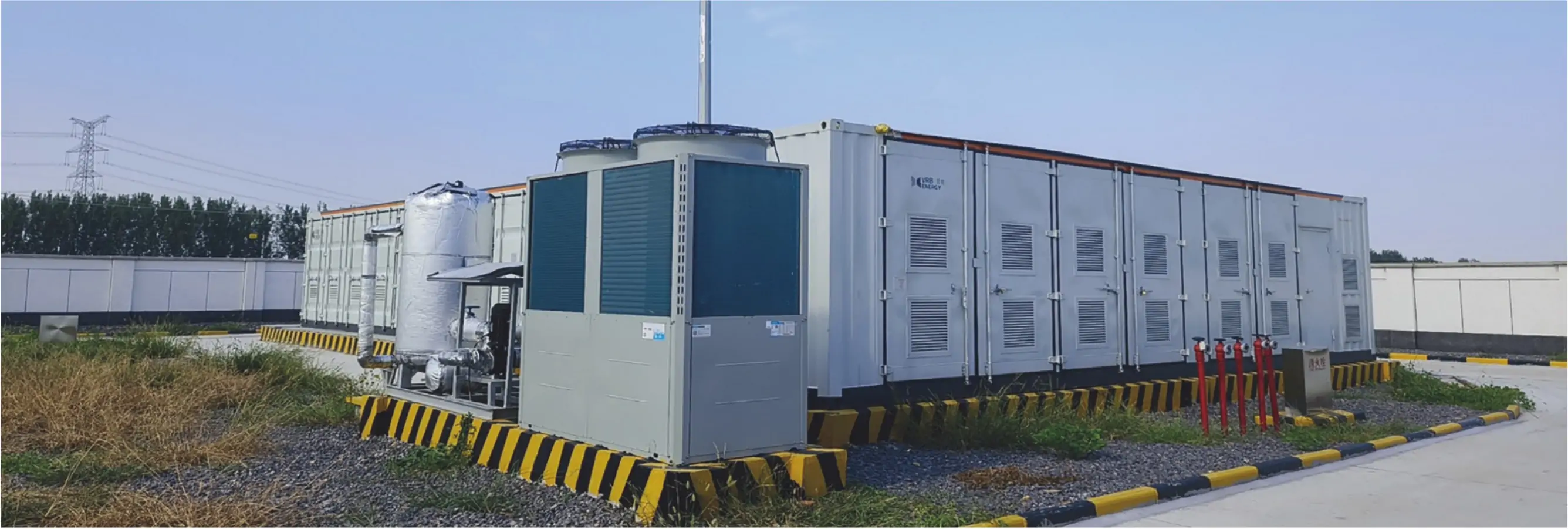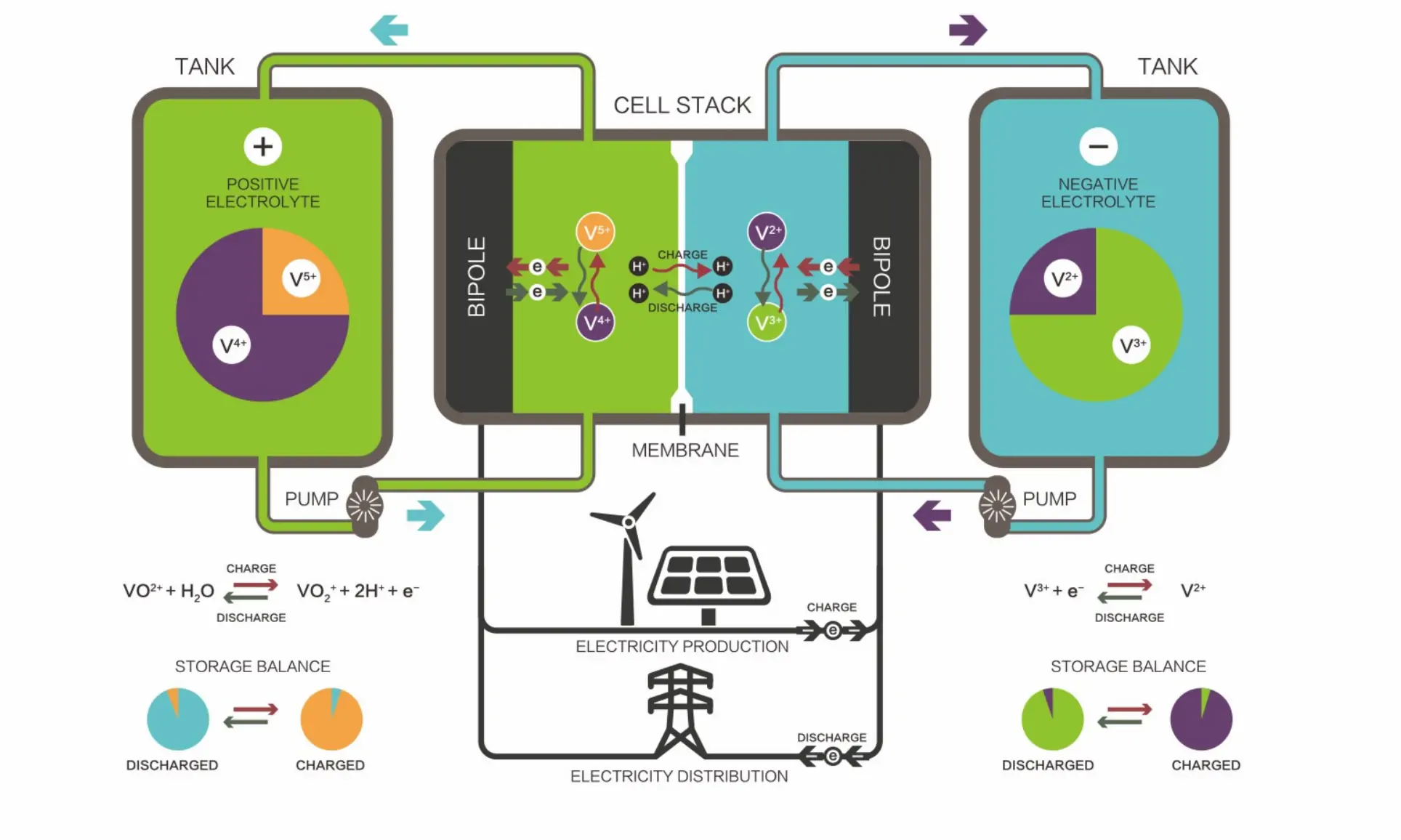 |
Welcome To Evlithium Best Store For Lithium Iron Phosphate (LiFePO4) Battery |
 |


Redox flow batteries operate on the fundamental electrochemical principles of oxidation and reduction, where energy is stored and released through these chemical reactions. Unlike traditional batteries, redox flow batteries keep their active materials—those involved in the energy transfer—separate from the cell in which the electricity is generated. This allows the materials to be pumped into the cell as needed, making these batteries especially suitable for flexible and large-scale applications.
These batteries come in different types, distinguished by their electrolyte solutions and the specific chemical makeup of their active materials. Among these, vanadium redox flow batteries (VRFBs) have emerged as one of the most promising technologies for large-scale energy storage.
Vanadium redox flow batteries use liquid electrolytes containing vanadium ions in different oxidation states. Unlike traditional batteries that rely on solid electrodes, VRFBs feature two separate electrolyte tanks: one containing vanadium in its V2+ form and the other in its V5+ form. These electrolytes circulate through the cell stack, where electrochemical reactions occur, generating electricity. This setup allows VRFBs to deliver consistent energy output and enables the battery's energy storage capacity to be easily scaled by simply increasing the volume of the electrolytes.
Vanadium redox flow batteries offer several distinct benefits that make them ideal for both small and large-scale applications. The primary advantage of VRFBs is their scalability. The energy storage capacity can be increased or decreased by adjusting the amount of electrolyte solution, allowing them to be tailored to specific energy requirements.
Moreover, VRFBs can handle deep discharges without suffering from damage or loss of performance, making them well-suited for applications like grid stabilization, where occasional deep discharges are essential. Their liquid electrolyte design also results in a longer cycle life, as it reduces the wear and tear typically seen in solid-state electrodes.
1. Spiral Flow Field Enhancements Recent research has focused on improving the efficiency and energy density of VRFBs. A novel spiral flow field (NSFF) design was developed to enhance the distribution of electrolytes within the battery, reducing local concentration polarization. Despite the NSFF causing a higher pressure drop and lower system efficiency due to its longer flow path, it showed significant improvements in coulombic efficiency, voltage efficiency, and overall energy efficiency. This innovation is especially promising for small-stack applications, highlighting the role of VRFBs as a key player in the growing landscape of electrochemical energy storage.
2. Electrode Material Advancements Another area of significant progress has been in electrode materials. Researchers are investigating various electrode modifications to boost VRFB performance, including iron-doped carbon–nitrogen materials, carbon nanotubes, and other advanced compounds. These developments aim to optimize the battery's performance by improving electrode wettability and permeability, directly impacting efficiency and reducing unwanted side reactions. This focus on material science is crucial for maximizing the long-term stability and cost-effectiveness of VRFBs in large-scale applications.
When compared to other energy storage technologies, vanadium redox flow batteries stand out for their flexibility and durability. Unlike lithium-ion batteries, which are widely used in small-scale applications, VRFBs excel in large-scale energy storage due to their scalable design and longer life cycle.
Pumped hydro storage, while effective, is often limited by geographical constraints. VRFBs, on the other hand, are not tied to specific locations, offering more versatility in deployment across diverse environments. This makes VRFBs a competitive choice for renewable energy integration and grid-level storage.
Despite their advantages, vanadium redox flow batteries face some significant challenges. The cost of vanadium itself is a major barrier, as it is relatively expensive and can be scarce. Additionally, the corrosive nature of vanadium electrolytes can lead to durability issues, which might impact the system's longevity in certain conditions.
However, ongoing research efforts are aimed at overcoming these obstacles by enhancing energy density, reducing material costs, and improving overall efficiency. These developments are key to making VRFBs more economically viable and widely adopted in the energy storage market.
Vanadium redox flow batteries represent a transformative solution for large-scale energy storage needs. With their unique ability to scale energy capacity and provide a longer cycle life, VRFBs are well-positioned to support the growing demand for renewable energy integration. Recent advancements, including innovative spiral flow fields and electrode material enhancements, continue to push the boundaries of VRFB technology, making them even more competitive as a reliable, efficient, and environmentally friendly option for large-scale energy applications. As the energy landscape evolves, VRFBs will play a crucial role in enabling a sustainable and resilient power infrastructure.
Edit by paco
All Rights reserved © 2025 Evlithium Limited